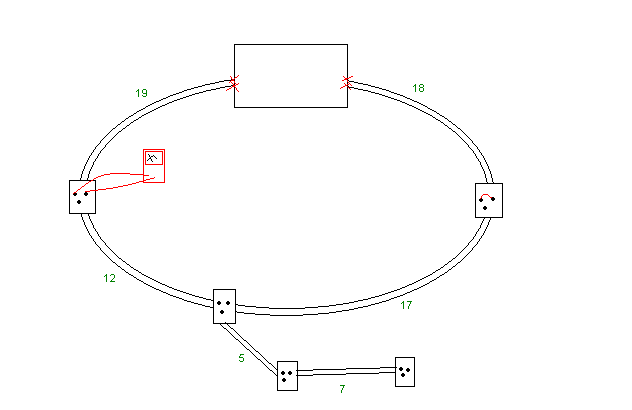i don't know if this is the right way, but here's what i came up with.
THIS HAS THE POTENTIAL TO BE AN EXTREMELY DANGEROUS PROCEDURE. DO NOT ATTEMPT UNLESS YOU HAVE THE PROPER TRAINING TO UNDERSTAND WHAT IS BEING DESCRIBED HERE.
what i'm going to suggest is that you bridge the hot and neutral on one outlet in the ring. then. obviously, before you even think about attempting anything like this, you must turn off and disconnect the hot and neutral from the consumer unit. disconnecting the hot and neutral from BOTH sides of the ring is very important to the accuracy of your readings.
once you have bridged an outlet, you can take resistance readings between hot and neutral. if you have one outlet that you can be fairly certain is the first or last outlet on the ring, you can use that as your bridged outlet, then figuring out the order of the ring is as simple as sorting the list by resistance.
here's an example:

the black lines are wires. the red X's mark where the wires should be disconnected. notice the outlet on the right is bridged and a multimeter is connected to the outlet on the left. the green numbers are the resistances of the wires. obviously the numbers are not realistic, but this is just an example.
in the picture, the multimeter would be reading 58: 12 + 17 + 17 + 12 (that's the wires to outlet on the right and back).
the outlet on the bottom of the ring would read 34: 17 + 17.
since none of the outlets on the spar are bridged, they will not affect the reading above.
if you can't identify the outlets at the end of the ring, you can connect the hot/neutral on one side of the ring at the breaker, then measure the resistance of each outlet. the one with the lowest resistance is the outlet closest to that end of the ring.
the tricky part is identifying spars using this method. it might be obvious based on the resistance readings, but it might not be.
